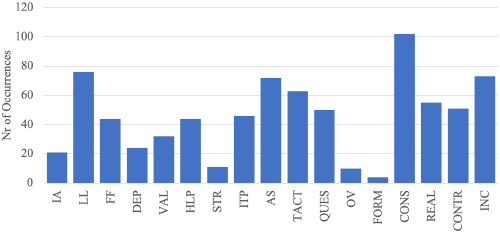Authors
Karin Hodnigg, Christian Macho, Martin Pinzger, & Dietmar Jannach
Abstract
Spreadsheets are a ubiquitous means of communication and decision making, and adequate comprehension is required for reading, interpretation as well as maintenance. Despite being around for forty years, only selected aspects of comprehension were studied, mainly focusing on error detection and correction, and largely disregarding a more holistic view on spreadsheet comprehension processes.
In this paper, we provide the first steps towards a deeper understanding of how users approach comprehension through a user study. In this study, we tasked eight spreadsheet users to describe their thought processes while trying to familiarize themselves with a real-world spreadsheet. The transcripts of these eight think-aloud studies were then used to identify 16 comprehension indicators validated by three experts. With these categories, we set out to qualitatively identify frequent comprehension patterns that the participants applied to understand spreadsheets.
Although the comprehension process is highly individual, we could identify frequently occurring patterns, such as assumptions can imply consolidations and realizations, and realizations often happen before contradictions. The results of this work can be used to design better tools that assist users in comprehending spreadsheets.
Sample

From studying sentences in the transcripts, 16 comprehension indicators were identified:
- The Interviewer (IA) marks sentences that indicate that the interviewer interacted in a way that influenced the participant (e.g. by answering questions).
- Labels (LL) marks sentences that reference labels, i.e., textual description in cells.
- Formula (FF) marks sentences that refer to functions or formulas.
- Dependencies (DEP) marks sentences the reference single cells, ranges, or cell names.
- Values (VAL) marks sentences that refer to concrete cell values in the spreadsheet.
- The format (FORM) marks sentences that mention font styles, colors or borders.
- Help (HLP) marks sentences that refer to the use of either internal or external help (e.g. search engines).
- Structure (STR) marks sentences that reference tables or blocks of cells.
- Interpretations (ITP) marks sentences that denote data-driven readings of the spreadsheet construed by the participant; to the effect of "that means".
- Assumption (AS) marks sentences that describe suppositions without full or only partial information; to the effect of "I believe".
- Question (QUES) marks sentences that describe rhetorical and actual inquiries by the participant.
- Consolidation (CONS) marks sentences that refer to aggregating, summarizing or recapping information.
- Realization (REAL) marks sentences that describe the concrete insights.
- Contradiction (CONTR) marks sentences that denote contradictions of prior statements.
- Incomprehension (INC) marks sentences that denote a lack of understanding.
- Micro-Strategies (TACT) marks sentences that subsume all statements that describe the participant's course of action.
Publication
2021, International Conference on Program Comprehension (ICPC 2021), May
Full article
Comprehending spreadsheets: Which strategies do users apply?
